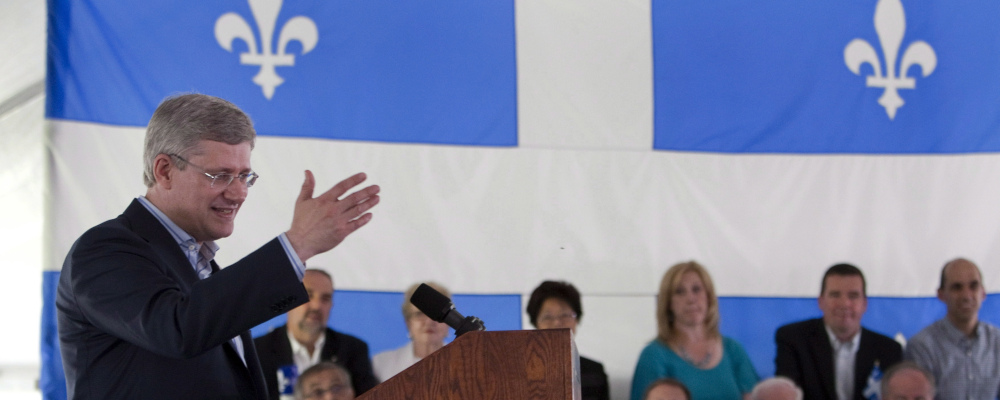American conservative journalist and author Matthew Continetti recently released his much-anticipated book, The Right: The Hundred-Year War for American Conservatism. The book, which seeks to chronicle the history of conservative ideas and politics in the United States over the past century, is already receiving considerable praise including as an “engaging and indispensable history” by Republican senator Ben Sasse.
Continetti’s history starts in the early 1920s because, as he outlined in a recent episode of Hub Dialogues, he sees continuity between this era and the present. According to his neoteric interpretation, the presidencies of Warren Harding and Calvin Coolidge reflected a set of policy positions—including skepticism of high levels of immigration, a constrained foreign policy, a commitment to religious ideas and values, and an emphasis on national economic development—that are broadly consistent with the current ideological energy in Republican politics.
The book isn’t merely about politics though. Continetti also aims to elucidate the interplay between intellectual and political conservatism over this 100-year period. His account incorporates how historical conservative thinkers and writers such as Frank Meyer and Bill Buckley and modern voices such as Ross Douthat and Peter Thiel have interacted with, responded to, and influenced American politics. He describes it therefore as “a synthesis of the political and the intellectual.”
Reading the book and subsequently speaking with Continetti has led me to think about whether one could produce a similar history of modern Canadian conservatism. When would it start? What ideas and principles might be the source of continuity? And who would be the thinkers, writers, and institutions who have come to leave a mark on our intellectual and political life?
I’m not the first one to ask these questions. A combination of academic and popular writers has previously sought to answer them. The best contemporary analysis of Canadian conservative ideas and politics is a must-read essay by regular Hub contributor, Howard Anglin, published by a German think-tank in 2021. The essay, which aims to discern common ideas and themes from Sir John A. Macdonald to Stephen Harper, rightly concludes that:
“Canadian conservatism has been renewed and reinvented so many times that a Conservative leader today has to squint to discern a coherent tradition among so many disparate and contradictory historical figures and is, thus, mostly free to chart his own course free of spectral haunting.”
There are two main factors that complicate such a historical inquiry. The first is the province of Quebec which has followed something of a different trajectory of intellectual and political development than the rest of the country. The province’s focus on conserving its distinct cultural and linguistic inheritance has contributed to a diminished emphasis on liberalism and liberal ideas which continues to manifest itself today in a more explicit sense of nationalism including greater immigration restrictions and Bill 21’s limits on religious expression.
As Anglin argues, the second factor is that even within English Canada, it’s difficult to discern a single, consistent conception of conservatism for most of the past 100 years. Over this period, Canadian conservatism as an intellectual and political movement has undergone a significant evolution from the progressive politics of Robert Borden and John Bracken to the nationalistic politics of George Drew and John Diefenbaker to the modern conservative politics of Brian Mulroney and Stephen Harper.
It’s fair to say that Arthur Meighen, who took over the party’s leadership from Borden in July 1920 and served as Prime Minister until he was defeated in late 1921, may be the historical figure who would best fit the mould of contemporary conservatism.Meighen was committed to broadening the base of the old Conservative Party, much as John A. Macdonald had done in 1854 and 1867 and Borden in 1911 and 1917. http://www.biographi.ca/en/bio/meighen_arthur_18E.html He embodied a combination of broadly free-market economics, a tough-on-crime agenda, and a foreign and defence policy hawkishness that would be recognizable to modern conservatives. But Meighen is the exception to the rule. It’s otherwise hard to draw a straight line from the past to the present.
Much of these intra-conservative differences find their source at the level of ideas. Although the famous Hartz-Horowitz formulation about “Lockean liberalism with a Tory touch” is a broadly useful heuristic to understand Canadian conservatism, the relative emphasis on liberalism versus Toryism has ebbed and flowed over the years. There have also been other intellectual influences such as the role of early twentieth-century progressives in Borden’s 1907 Halifax Platform (which he described as the “most advanced and progressive policy ever put forward in federal affairs”) or the ongoing vestiges of an imperial sensibility under Drew’s leadership.
The key point here is two-fold: first, unlike Continetti’s chief insight in his 100-year history of American conservatism, it’s difficult to discern significant intellectual and political continuity between much of twentieth-century Canadian conservatism and the present; and second, like Continetti’s synthesis of intellectual and political conservatism, there’s evidence that Canadian conservatism’s trajectory has been shaped by certain intellectual influences.
John Diefenbaker’s leadership is a good example of both points. His defining notion of economic nationalism is no longer significantly reflected in modern conservative ideas or politics. Peter MacKay’s defeat of David Orchard in the 2003 Progressive Conservative Party’s leadership race seemed to mark its political demise. It’s since been replaced by a general deference to markets and an openness to trade and investment with the United States and the rest of the world.
The salience of Diefenbaker’s economic nationalism was shaped by various factors (including his own personality, his complex relationship with U.S. President John Kennedy, and the cultural moment of Canada’s impending centennial), but the ideas and writings of conservative intellectuals were a major influence.
It’s not an accident, for instance, that conservative philosopher George Grant published his famous book, Lament for a Nation: The Defeat of Canadian Nationalism,“Lament for a Nation: The Defeat of Canadian Nationalism by George Grant is a short book that eloquently argues that Canada has ceased to be a nation.” https://www.thecanadianencyclopedia.ca/en/article/lament-for-a-nation-the-defeat-of-canadian-nationalism two years following Diefenbaker’s defeat. Grant’s polemic about the election outcome outlined a narrative of Canadian conservatism that fundamentally defined itself as a rejection of the hyper-liberalism and unrestrained capitalism of the United States. Donald Creighton, the famous biographer of Macdonald himself, was similarly a supporter of Diefenbaker’s and even served as a speechwriter.
It wasn’t until Diefenbaker’s successor Robert Stanfield’s tenure as Conservative leader, however, that the modern intellectual and political conservative movement began to take shape. Its origins are rooted in reaction to the prevailing policy ethos of the Stanfield era rather than based on his inspiration. Put differently: if the political expression of modern American conservatism was first personified by Barry Goldwater’s conservative insurgency, the Canadian version was born as a rejection of Stanfield’s Laurentian ideas and politics.
Today’s self-conscious conservative movement can in particular trace its roots to the issue of price and wage controls in the mid-1970s. That seems to be the main catalyst for the growing expression of a set of conservative ideas about markets and the role of the state that were spreading across the Anglosphere at the same time.
Although price and wage controls were implemented in Canada by the government of Pierre Trudeau in response to high inflation, the political idea was first advanced by Stanfield in the 1974 federal election. Trudeau famously opposed it“Zap you’re frozen!” during the campaign but subsequently adopted price and wage controls in its aftermath.
The so-called Anti-Inflation Program was the height of the technocratic arrogance of the post-WWII era. The idea that politicians and bureaucrats could micromanage prices in a complex market economy was self-evidently absurd and signalled a massive overextension of the Keynesian consensus. That the Progressive Conservative Party championed price and wage controls reflected how much these ideas pervaded Canadian intellectual and political life. There was no serious alternative to a politics of big government.
The first major challenge to this intellectual orthodoxy was the establishment of the Fraser Institute in late 1974. A small group including Michael Walker, an economist who had worked for the Bank of Canada and the Department of Finance in Ottawa, was integral to launching the new think-tank purposefully based in Vancouver (and named after the Fraser River) so as to avoid the risk of intellectual and political capture resulting from closer proximity to the centre of policymaking in Ottawa or the provincial capitals. Walker, who would serve as the institute’s executive director from 1974 to 2005, is arguably the most important Canadian conservative intellectual of the era.
Under his leadership, the Fraser Institute’s early work included multiple papers and books on the conceptual and empirical problems with wage and price controls including its influential 1976 essay collection, The Illusion of Wage and Price Control, which was positively reviewed by future Bank of Canada governor David Dodge.
The institute soon expanded its efforts to a broader set of policy questions and reforms including lowering taxes, privatizing Crown corporations, and introducing greater choice in the country’s education and health-care systems. Its greatest policy accomplishment though was the slow yet steady intellectual victory in favour of balanced budgets and smaller government that culminated with the Chretien government’s fiscal reforms in the mid-1990s.
Another key intellectual institution in the late twentieth century was the University of Calgary’s political science department. The so-called “Calgary School” was personified by a group of conservative thinkers and scholars including Tom Flanagan, Rainer Knopff, Ted Morton, and Barry Cooper who arrived together at the university in the early 1980s. In their academic scholarship, popular writings, and even political engagement, they challenged various aspects of central Canadian orthodoxy on the Canadian Charter of Rights and Freedoms, the role of government, and even the conventional narrative of Canada’s founding itself.
The biggest contribution of the Calgary School though was Stephen Harper, who did graduate work on the political business cycle at the University of Calgary in the early 1990s and came to collaborate with Flanagan and others on a combination of intellectual and political pursuits including his involvement in the early Reform Party. Harper’s time at the University of Calgary was a formative period during which his views about politics and government in general and the makings of a mainstream conservative politics in particular really crystallized.
He is such an important figure in modern Canadian conservatism because unlike virtually anyone in Continetti’s story, Harper fused the intellectual and political strains of modern conservatism. He was in effect the personification of the synthesis to which Continetti’s book aspires. This unique combination necessarily made Harper a dominant figure in the world of conservative ideas and conservative politics for the past quarter-century, including of course the founding of the modern Conservative Party in 2003. No one has had a greater effect on defining and shaping contemporary Canadian conservatism.
With a conservative intellectual leading the party, there was far more interaction and engagement with the world of conservative ideas during Harper’s prime ministership. He had previously run the National Citizens Coalition, attended and spoke at conservative events such as the annual Civitas meetings and Manning Centre conferences, and was just generally comfortable in a conservative intellectual milieu.
His 2003 Civitas keynote speech, which is no longer fully available online, is still the most sophisticated and nuanced description of how the Hartz-Horowitz thesis might manifest itself in the twenty-first century. As Ken Boessenkool and I have written elsewhere, Harper’s political ideas reflected a fusion of economic and social conservatism that might be best characterized as “ordered liberty.”
The upshot is that the Harper government was a good time for conservative intellectuals to influence and shape public policy. Probably the two leading conservatives of this era were the Macdonald-Laurier Institute’s Brian Lee Crowley and University of Calgary economist Jack Mintz.
Crowley, who was close with Finance Minister Jim Flaherty and others in the government, established MLI in 2009 to try to influence the full range of federal policy including the areas of national security, defence, and foreign affairs. MLI’s biggest accomplishment in the Harper years though was its work on Old Age Security reform which had a major influence on the government’s decision to raise the eligibility age from 65 to 67 in the 2012 budget.
Mintz was also a significant influence on the Harper government’s policy agenda including as a member of Flaherty’s Economic Advisory Council. He’s continued to inform conservative policymaking across the country—most recently in Alberta with the Kenney government’s bold decision to slash corporate taxes prior to the pandemic in order to catalyse investment and greater economic activity.
In the intervening period since Harper stepped down as party leader in 2015, the Conservative Party’s search for a political identity has been somewhat matched by a similar process of renewal and change in the world of conservative ideas. Generational change in elected Conservative politics—what I’ve come to describe as the rise of the Millennial Conservative Caucus—has similarly been reflected in the adjacent conservative intellectual movement. This turnover has led to the emergence of new voices, ideas, and institutions.
The emerging group of thinkers and writers are recalibrating conservatism to better reflect the questions of their generation. This isn’t a disavowal of the conservatism that grew out of the mid-1970s so much as it has been an adjustment and reorientation of conservatism to contemporary issues facing Canadians. As part of this exercise in intellectual and political renewal, leading thinkers and scholars such as the Cardus Institute’s Brian Dijkema are grappling with big questions about the dignity of work in the modern economy, and MLI senior fellow Jamil Jivani is providing intellectual leadership on the complex issues of race, culture, and communities. This type of contemporized policy thinking puts them at the forefront of modern Canadian conservatism.
The most promising institutional development in recent years is the Runnymede Society“The Runnymede Society is an expressly non-partisan entity. We invite speakers from all across the ideological spectrum to debate legal ideas that engage the rule of law, constitutionalism, and individual liberty.” https://runnymedesociety.ca/about-us/ based out of the Canadian Constitutional Foundation. Started in 2016, the Runnymede Society, which is influenced by the success of the U.S. Federalist Society, has established chapters at most major law schools across the country with the goal of building a network of conservative-minded lawyers and legal scholars to challenge the overwhelming progressive orthodoxy dominating law schools, the legal profession, and ultimately the judiciary.
The Harper government’s appointment of Justice Russell Brown in 2015 to the Supreme Court was a major achievement for this nascent conservative legal movement. It provides an intellectual beachhead for these law students and young lawyers whose ideas and values may diverge from Canada’s progressive legal monoculture. It signals that the Runnymede Society has the long-term potential to reshape judicial debates in the same way that Michael Walker and the Fraser Institute transformed fiscal policy thinking in the 1980s and 1990s.
A predictable critique of this truncated history is that it’s unexhaustive—it doesn’t account for the particularities of Quebec or other regional movements, new, emerging internet-based platforms and voices or the network of activists and institutions that represent the social conservative persuasion. This is a fair criticism that reflects in large part my limited scope compared to Continetti’s far more ambitious project.
But, fundamentally, it’s right that Canadian conservatism as it is currently conceived can identify its origins in the mid-1970s as an intellectual and political reaction to price and wage controls in particular and the overreach of government in the economy and society in general. Now, as the intellectual and political movement that grew out of that context approaches its fiftieth anniversary, it’s going through a process of generational change and renewal including the emergence of new issues, institutions, and voices.
How these ideas and efforts manifest themselves in Conservative politics is yet to be seen. That will ultimately be up to future historians to assess.
Recommended for You

Samuel Ragot and Daniel Béland: Poverty among persons with disabilities is a policy choice

The Weekly Wrap: Nostalgia is not a good enough reason to keep the CBC around

Harrison Lowman: Why conservatives despise the CBC, why they can’t wait to tear it to shreds, and why they have a point

Need to Know: Two views on how to manage Canada’s rocky relationship with the U.S. and what it will take for us to meet our NATO obligations




